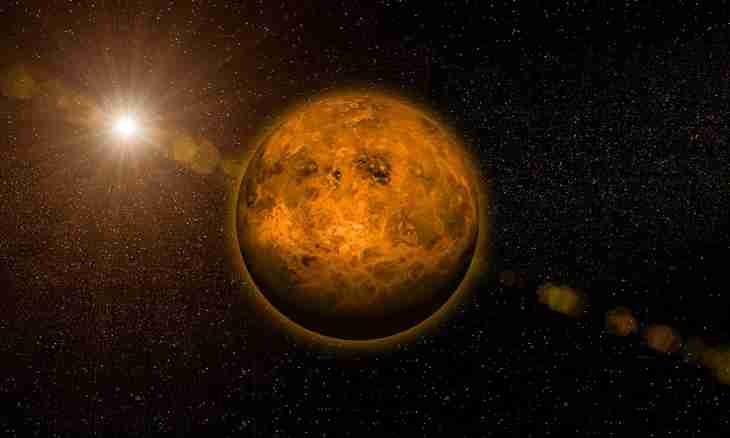Venus is the planet of so-called "terrestrial" group, along with Mercury, Mars and Earth. With the last it has the greatest similarity on density and the sizes. Venus appeared approximately at the same time, as Earth, but its atmosphere was formed according to the completely different scenario.
1. Venus is the planet noticeable, but hidden. It always brightly shines, but it is impossible to make out its surface without telescope. All because Venus is hidden by a layer of the clouds reflecting sunlight. For its study the scientists use special tools: probes or radars which waves pass through clouds.
2. 95% of carbon dioxide, 3.5% of nitrogen and other gases among which there is an argon are composition of the atmosphere of Venus. The planet is surrounded with the fog and clouds hanging on distance of 90 km from a surface. For comparison: clouds of Earth are at the height of 10-12 km. The layer between the 70th and 90th km represents the haze consisting of the smallest droplets of sulfuric acid. At the height of 50-70 km three thick layers of clouds of sulfuric acid, but with more dense drops are located. Sunshine hardly get through a layer of clouds therefore Venus is always shipped in a gloom.
3. Temperature of a surface of Venus is 460 wasps. Its research is complicated because of fast breakage of the equipment because of strong heat. 4. On Venus, traces of rough volcanic activity are found. There it is possible to see lava streams extent several hundreds of kilometers, volcanoes with huge craters and also a soil vspuchivaniye under pressure of the magma which was looking for an exit from bark to a surface. Unusual roundish formations which presumably were created at eruption of very viscous lava are called "fritters". Their diameter – several dozen kilometers, and height – about a kilometer. There are on Venus and huge craters – traces of collisions with asteroids. 5. Venus, as well as Earth, rotates around the Sun. It makes one whole revolution around a star in 225 terrestrial days, and our planet – for 365. Venus rotates around own axis too. But if Earth does such turn in 24 hours, then it moves more slowly and spends for the same action 243 days (about 8 months).
6. Venus and Earth rotate around the Sun with a different speed. Two planets are at distance from 40 to 260 million km. When they are as close as possible to each other, Venea looks from Earth as the tiny shining half moon.
7. Venus has no satellites.
8. Venus and Earth appeared in one area of the Fog which gave rise to our Solar system. Therefore the initial structure of breeds of these planets is identical. Because of it and the composition of the atmosphere is similar too. At a favorable temperature on the surface of planets water vapor is condensed and turns into oceans. So happened on Earth and, perhaps, on Venus. Consider that evaporation of huge oceans and led to formation of so powerful cloud layer.

